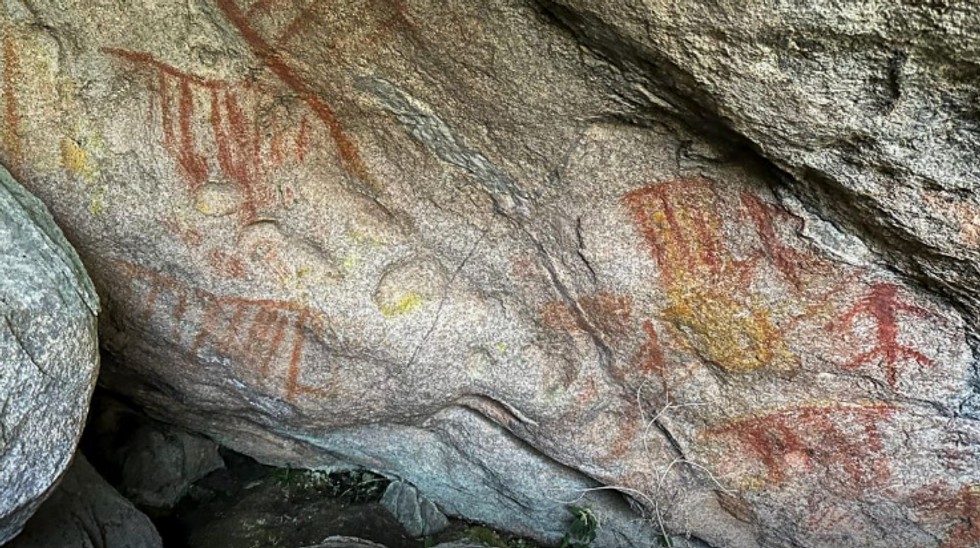MYSTERIOUS human remains found in bog believed to be over 2,000 years old
GB News
The site has been restricted to visitors whilst archaeologists study what could provide crucial insights into past human presence in the region
Don't Miss
Most Read
Trending on GB News
Ancient cave paintings potentially dating back 2,000 to 3,000 years have been discovered in Brazil's Itatiaia National Park.
The artwork was found in a cave within the park, which straddles the border between Rio de Janeiro and Minas Gerais states.
The site has been restricted to visitors whilst archaeologists study what could provide crucial insights into past human presence in the region.
The paintings were discovered by Andres Conquista, operational supervisor of the upper region of Itatiaia National Park, during a climbing expedition.

The artwork was found in a cave within the park, which straddles the border between Rio de Janeiro and Minas Gerais states
Concessionária Parquetur/PNI/Divulgação
He was initially attracted by a cluster of red lilies in bloom, when an unusually shaped rock caught his attention.
Upon entering the cave, Conquista found the ancient artwork, initially mistaking it for tourist graffiti before realising its potential significance.
A research team has been formed to investigate the discovery, comprising experts from the National Museum of the Federal University of Rio de Janeiro, the State University of Rio de Janeiro, and Itatiaia National Park.
The working group aims to uncover details about the age and origin of the artwork.
MORE LIKE THIS:
They are also searching for additional traces of past human presence in the surrounding area.
Professor MaDu Gaspar told Agência Brasil that the discovery is highly significant, as Rio de Janeiro has been a hub for researchers since the Imperial era.
"We were surprised to come across an entirely new site. It's not that similar sites don't exist—they do, in places like Minas Gerais—but nothing like this had ever been found in Rio de Janeiro," she said.
Preservation efforts at the site include the installation of cameras and an awareness campaign conducted with park staff and management.
The area has been cordoned off to allow specialists to conduct their research without interference.
According to Parque Tur's press office, "anyone who disregards the restrictions will face heavy fines." There is no timeline for reopening the site to visitors.
The significance of this discovery is amplified by the fact that Rio de Janeiro is considered the birthplace of Brazilian archaeology.
Professor Gaspar noted that despite extensive historical exploration in the state, this type of archaeological site had remained undiscovered until now.

Ancient cave paintings potentially dating back 2,000 to 3,000 years have been discovered in Brazil's Itatiaia National Park
GETTY
"And it's not hidden away at the top of a peak where only a few mountaineers go. It's in an accessible area. How had no one seen it before?" she remarked.
Researchers are currently in the early stages of investigating when the paintings were created, with preliminary estimates suggesting they may be 2,000 to 3,000 years old.
Professor Anderson Marques Garcia highlighted that archaeological research in Rio de Janeiro had previously focused primarily on coastal areas.
Future studies aim to establish connections between this site and known groups from São Paulo, Minas Gerais, or findings from the Paraíba Valley.







